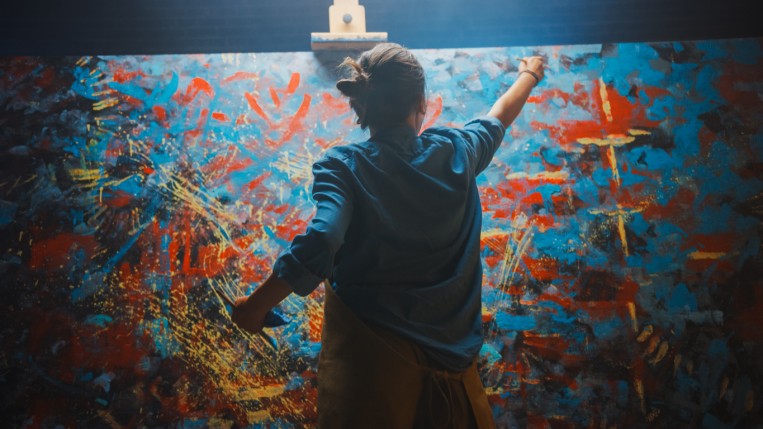SC ruling in NZ artist’s case: Copyright is relationship property
09 April 2025

-content_original.png)
Artist Sirpa Elise Alalääkkölä with her original painting. Photo from SirpaArt.
Finnish painter Sirpa Elise Alalääkkölä has lost her appeal to the Supreme Court of New Zealand that copyright is not relationship property but a separate property. In March 2025, the Supreme Court upheld previous rulings in the case that copyright is relationship property.
According to New Zealand’s Property (Relationships) Act 1976 (PRA), when a couple separates, there should be equal division of relationship property acquired during the union.
Alalääkkölä, born in Finland and now living in Marlborough Sounds in New Zealand, and ex-husband Paul Anthony Palmer have been embroiled in a copyright dispute involving the former’s paintings and the copyrights attached to these. The artworks were completed during the couple’s 20 years of marriage which ended in 2017.
The dispute began in 2020 during the couple’s divorce proceedings. The judge ruled that copyrights to the paintings are not relationship property. This means the copyrights belong solely to the artist.
Palmer appealed and, in 2021, the High Court ruled that copyright is relationship property. He was awarded joint ownership of the copyrights.
It was Alalääkkölä’s turn to appeal. In February 2024, the Court of Appeal decided that copyright created during a relationship is relationship property. It held that Alalääkkölä should have exclusive legal rights over her artworks.

Nadia Ormiston I Senior associate @ Dentons Kensington Swan, Auckland
The latest decision by the Supreme Court held that sole legal ownership remains with the artist. “The court decided Ms Alalääkkölä could not be forced to part with the copyright. Therefore, she was able to retain the copyright and thereby control the making of copies, etc., but she has to pay her former partner a share of its value in order to ensure an equal distribution of assets,” said Nadia Ormiston, senior associate at Dentons Kensington Swan in Auckland.
According to her, copyright as a property right logically fits within the definition of assets under the PRA.
“However, this inclusion creates tension,” Ormiston said. Unlike tangible assets, copyright can be deeply personal, she explained. Take a painting for example. Often, a piece of art such as a painting, is the result of a lifetime of training, learning and creating. Hence, artists are likely to feel a strong emotional attachment to their paintings. Some artists even have no intention of ever selling or exploiting the copyright in their works, or at least some of their works. So, if these works are treated in any way that is not in accordance with the artist’s wishes – such as using a painting for mass reproduction on merchandise – this may directly harm the artist’s reputation and career.
“In this unusual case, the Supreme Court tried to address this tension by deciding that although the paintings themselves were relationship property, Ms. Alalääkkölä retained sole ownership of them and the copyright in them. This means she can control the works as she sees fit, so long as she compensates her ex-husband for their value, an issue sent back to the Family Court to determine,” Ormiston explained.
Another issue in the appeal involved how to classify and value the artworks and the copyright in them. Alalääkkölä categorized her works into three groups, namely: works she would never sell or commercialize because they were unsuitable, damaged or private; works she might sell as exclusive prints but not for merchandising; and works she had previously commercialized in the form of prints or cards. The Supreme Court accepted such categorization. “The category of each work will affect its valuation, allowing Ms. Alalääkkölä some control over the valuation process,” said Ormiston.
“The decision may initially appear alarming for creators including authors and artists,” added Ormiston, “but it at least provides some clarity on the approach to the division of property in the form of copyright, following a separation.”
She advised creators concerned about losing ownership and control of their copyright due to relationship property rules to consider legal mechanisms like contracting out. “Do so early in a relationship,” Ormiston suggested.
- Espie Angelica A. de Leon






